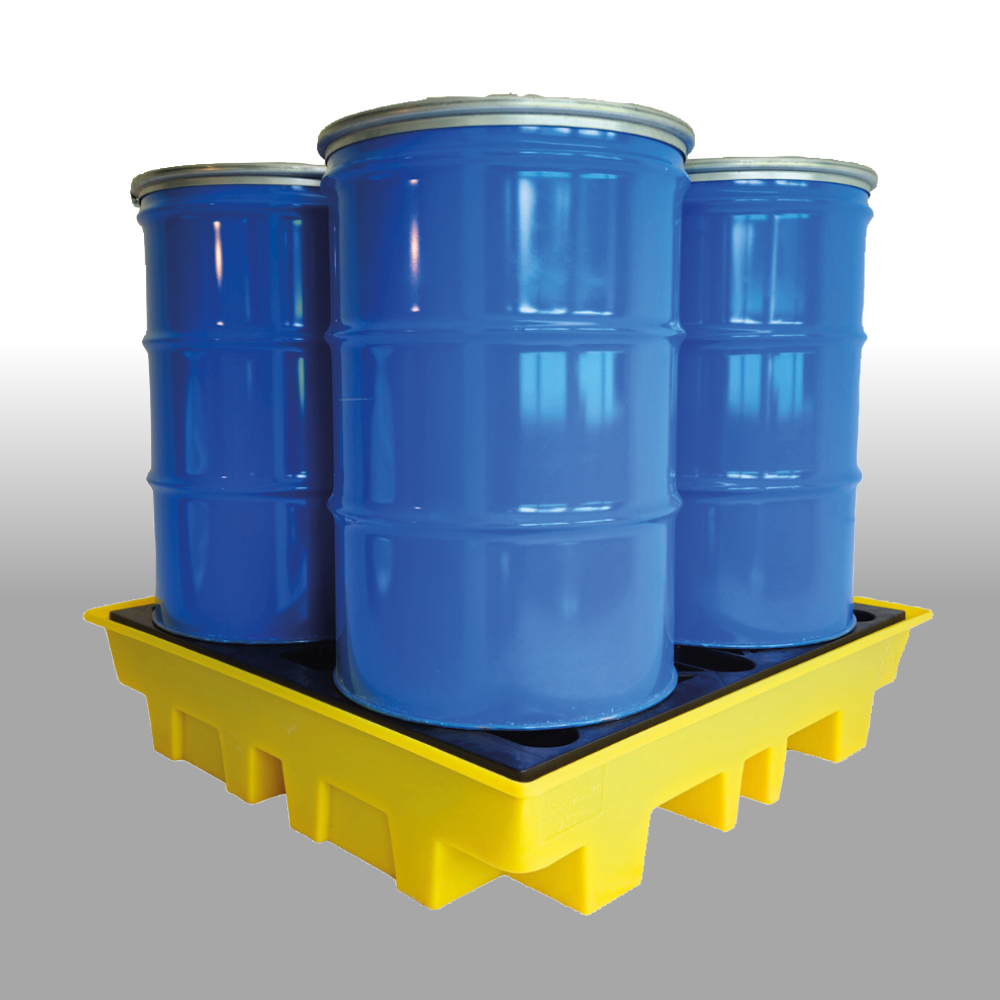In any workplace where liquids are handled—be it oils, chemicals, fuels, or even water—spill containment is more than a precaution; it’s a necessity. A single uncontrolled spill can lead to accidents, costly downtime, environmental damage, and legal consequences. Having a clear, practical approach to spill containment is critical to maintaining a safe and compliant workplace.
Why Spill Containment Matters
Spill containment refers to the methods and systems used to prevent, control, and clean up hazardous or potentially harmful spills. Whether it’s a leaking drum in a warehouse or a fuel spill in a yard, swift and decisive action is essential to:
- Protect workers from slip hazards and exposure to harmful substances
- Prevent environmental contamination
- Avoid fines for breaching environmental and health & safety regulations
- Maintain operational efficiency by reducing downtime
Key Strategies for Effective Spill Containment
1. Assess Your Spill Risks
Every workplace is different. Start by identifying the types of liquids you store and use, the quantities involved, and the areas where spills are most likely to occur. This risk assessment will help determine the right type of containment solution for your site.
2. Use the Right Spill Containment Products
Having appropriate equipment on-site can prevent a minor spill from becoming a major problem. Some essential spill containment products include:
Spill Kits
These should be strategically placed and include absorbent pads, socks, pillows, and disposal bags. Kits should be suitable for the type of liquid being stored (e.g., oil-only, chemical, or general-purpose).
- Explore our full selection of Spill Kits
Drip Trays and Spill Pallets
Ideal for storing drums and containers, they catch leaks before they spread.
- Browse our full range of Drum Spill Pallet Bunds
- For IBCs, see our IBC Spill Pallet Bunds
- For weather-resistant options, view our Covered Spill Pallet Bunds
- For smaller containers or indoor use, explore our Spill Drip Trays
Collapsible Bunds
A flexible solution for larger containers or mobile plant equipment, providing temporary containment in high-risk areas.
Drain Protection
Covers and mats can be used to block drains during a spill, preventing contamination of water systems.
3. Train Your Staff
Even the best equipment is useless if your team doesn’t know how to use it. Regular training sessions should cover:
- Identifying different types of spills
- How to respond safely and effectively
- Proper use of absorbents and disposal methods
- How to report and record incidents
4. Implement a Spill Response Plan
Your spill response plan should outline:
- Who is responsible for spill response
- What steps should be taken during a spill
- Where kits and equipment are located
- How waste is to be disposed of safely
Keep the plan accessible and ensure all staff know their role.
5. Maintain and Restock Equipment
After a spill, kits need to be restocked promptly. Regular checks should be scheduled to ensure all containment measures are in place and ready for use.
Staying Compliant
UK regulations such as the Control of Substances Hazardous to Health (COSHH) and the Environmental Protection Act place a legal duty on businesses to manage spills effectively. Proper containment also supports ISO 14001 environmental management systems and helps demonstrate your commitment to safety and sustainability.
Conclusion
Effective spill containment goes beyond emergency response. It requires careful planning, proactive prevention, and ensuring your team is always ready to respond. At One Stop for Safety, we provide a wide range of spill containment solutions tailored to your industry and site requirements. From absorbents to bunds and full spill kits, we’re here to help you build a safer, more resilient workplace.
Explore our full range of spill containment products or get in touch to discuss your requirements.


